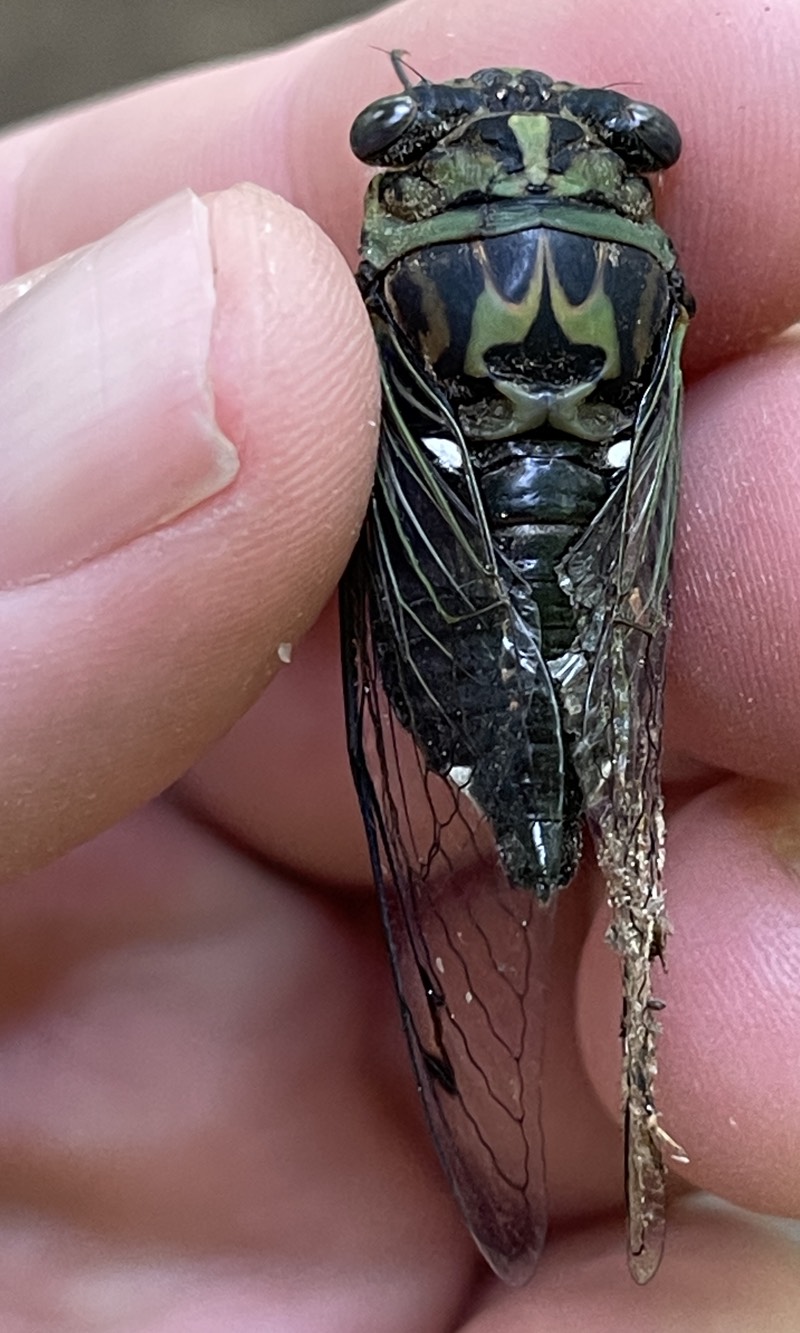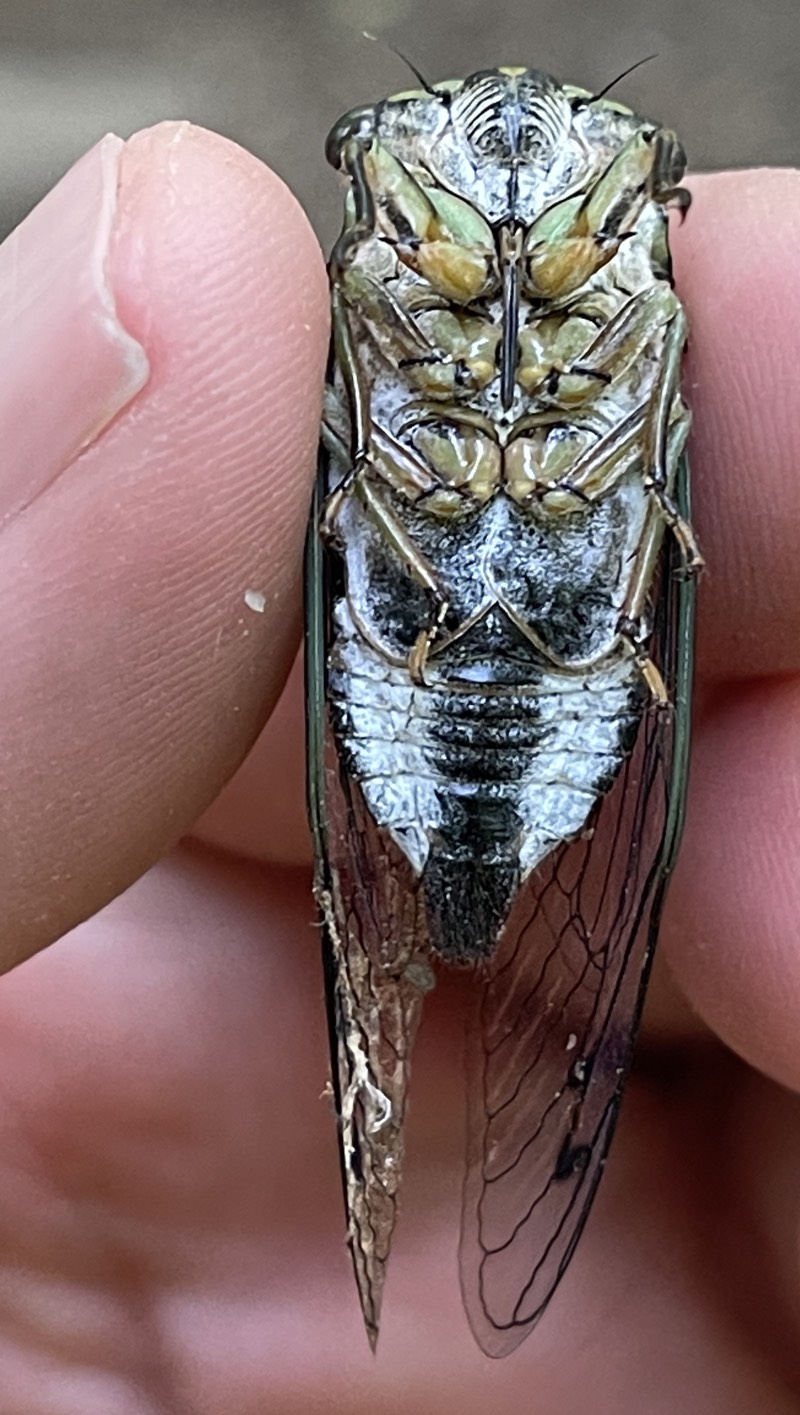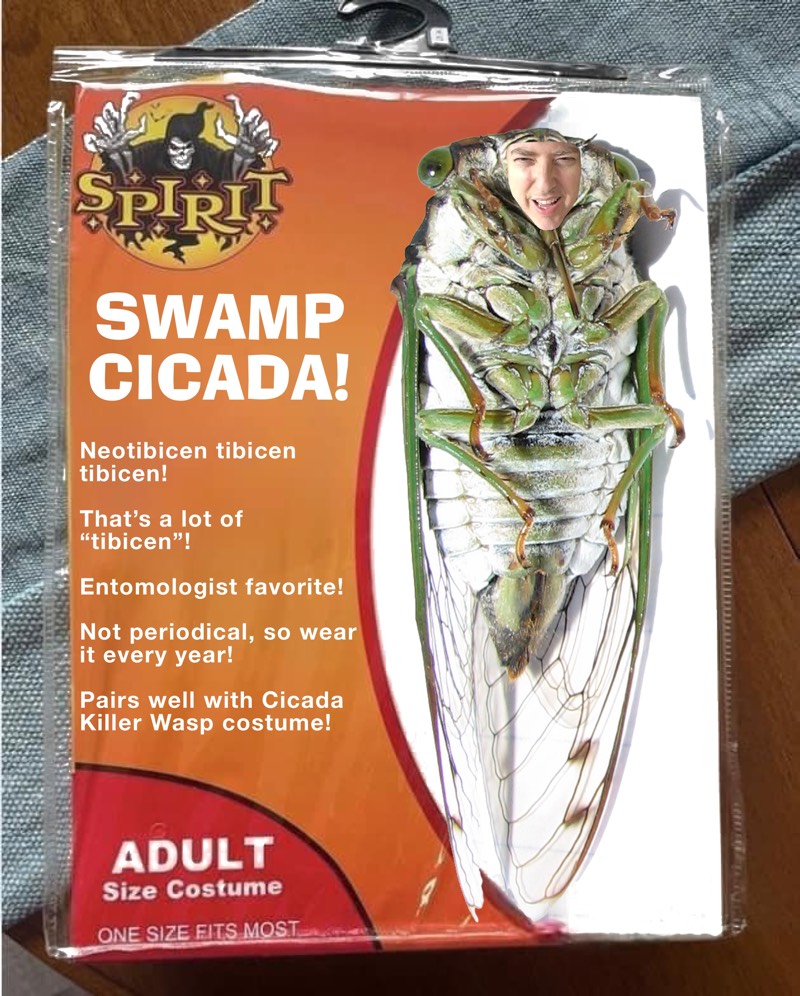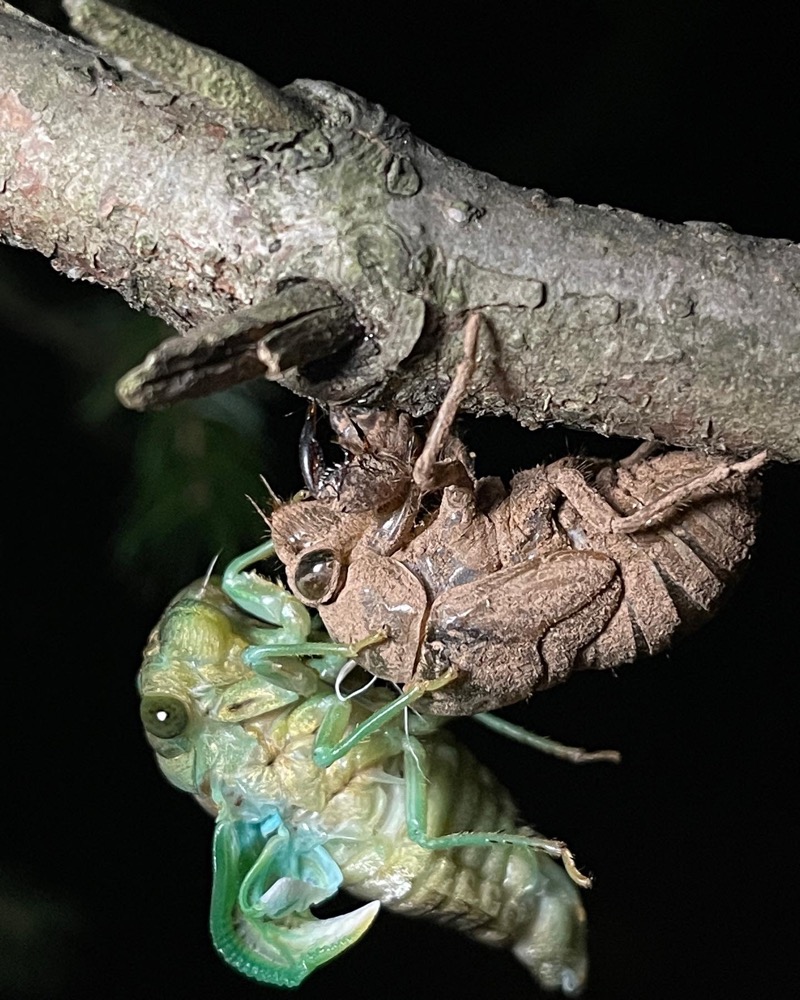I was hiking the trails on Pyramid Mountain in Boonton, NJ on August 9th, 2022, when I came across a Neotibicen linnei (Smith and Grossbeck, 1907) aka Linne’s Cicada lying on the ground. Pyramid Mountain is geologically interesting and features glacial erratics of all shapes, sizes, and types (180-ton balancing boulders, purple pudding stones, green & black gneiss, green serpentinite, etc.), with plenty of rocks small enough to trip on and “roll an ankle”, so you have to keep your eyes on the trail. The cicada appeared dead, but it came to life once I picked it up. One of its forewings was too damaged to fly, though.
Dorsal view. It is a male. Note the green collar and two white pruinose spots on the sides of the abdomen.

Ventral view. Note the overlapping opercula and clearly defined white pruinose on both sides of the abdomen.

One forewing was damaged, torn, and dirty. It could not fly.

















